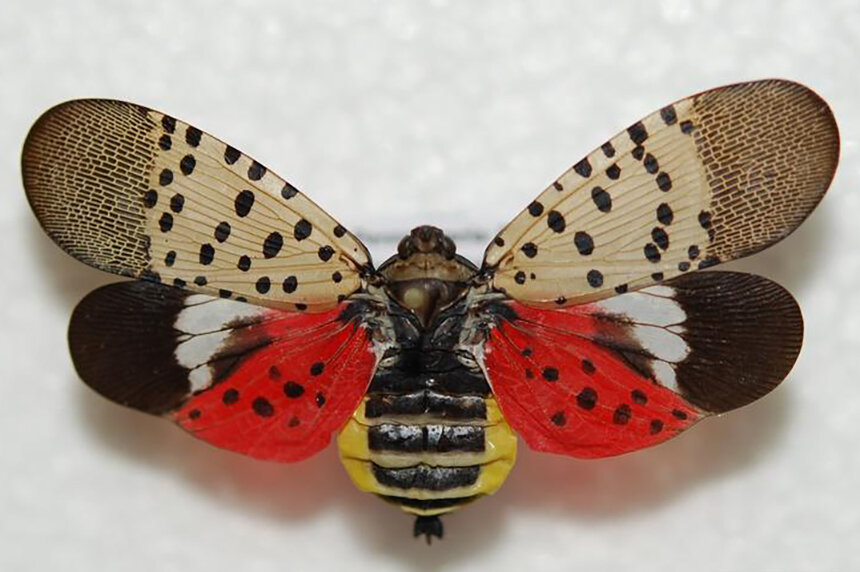By GRACE KELLY/ecoRI News staff

Hailing from Asia, the spotted lanternfly made its first
documented U.S. appearance five years ago. It has since been found in
Connecticut and Massachusetts. (Lawrence Barringer/Pennsylvania Department of
Agriculture)
A
tiny, winged invader is making its way up the Mid-Atlantic Coast. Rhode Island
is holding out, but only just so. The spotted lanternfly has already reached
other states — Massachusetts, Connecticut, and New York — and experts are
worried that it could make its way here.
“There
was one interception in Massachusetts and one in Connecticut,” said Cynthia
Kwolek, senior environmental planner at the Rhode Island Department of
Management’s Division of Agriculture.
“An interception is when they find an insect but they don’t find any additional insects or infestations. But it’s usually an indicator that there are shipments going to this area from the infested area, and they usually find more infestations within a few years after an interception.”
“An interception is when they find an insect but they don’t find any additional insects or infestations. But it’s usually an indicator that there are shipments going to this area from the infested area, and they usually find more infestations within a few years after an interception.”
Hailing
from Asia, the spotted lanternfly made
its first documented U.S. appearance in 2014, when a female snuck onto some
imported building materials that were brought to Berks County, Pa.
“They are very good travelers, and their egg masses are relatively inconspicuous, so they lay their eggs on pretty much anything,” Kwolek said. “So if somebody is moving to another area from the infested area, they might not notice that they have egg masses laid in some of their tire wells, or in the undercarriage of the car.”
 |
| Spotted lanternfly nymphs. (Cynthia Kwolek/DEM) |
With
the spotted lantern fly comes swarming, sap sucking, and general unpleasantry.
“They
swarm and aggregate on trees,” Kwolek said. “So there could be a tree with 500
adult insects. They also excrete honeydew, which is a byproduct of their
feeding from the sap in the trees. It’s sticky and can attract ants and wasps.”
Kwolek
also noted that this can be a nuisance for homeowners. During one of her visits
to Pennsylvania, she saw backyard decks coated with the sticky substance.
Another
issue the Asian insects bring is their choice of food. While their main target
is another invasive species, the tree of heaven, the
spotted lanternfly doesn’t stop feeding there. They seem to also like
grapevines.
“In
the past five years in Pennsylvania, they’ve seen a reduction in grape yield,”
Kwolek said. “And here in Rhode Island, we have a couple hot spot vineyards
that are great tourist attractions and if this insect was to come here and
target those vineyards, it could be harmful to the growers’ income and our
tourist economy.”
While
there has yet to be a sighting of a spotted lanternfly in Rhode Island, the Division of Agriculture
is hosting information sessions — the next one is expected to be held in
January — to inform the public on what these tiny invaders look like and what
to do if one is spotted. In the meantime, Kwolek asks that the public keep an
eye out.
“If
you see one, take a photo, and if possible, try to catch and freeze the insect,
and then we would be able to identify it,” she said.
To
report a sighting of an invasive species in Rhode Island, click here.